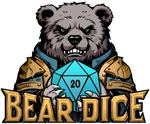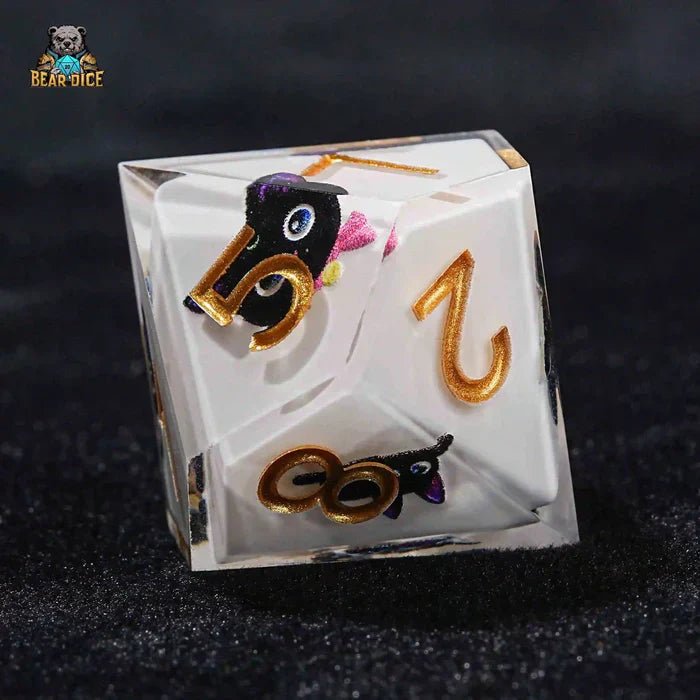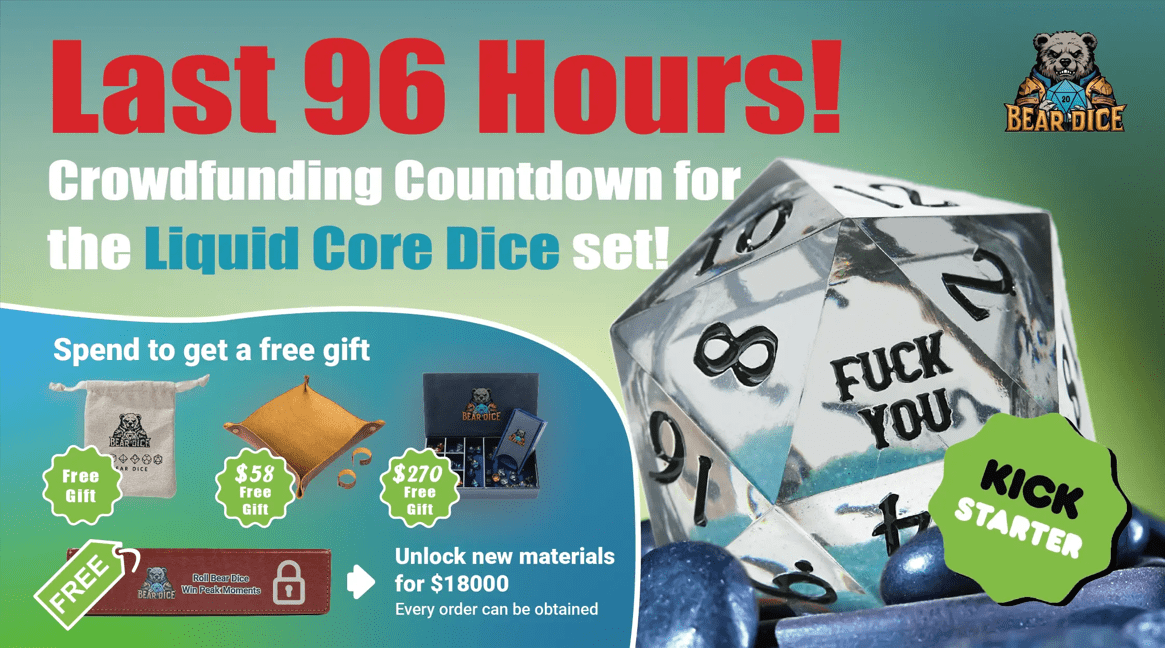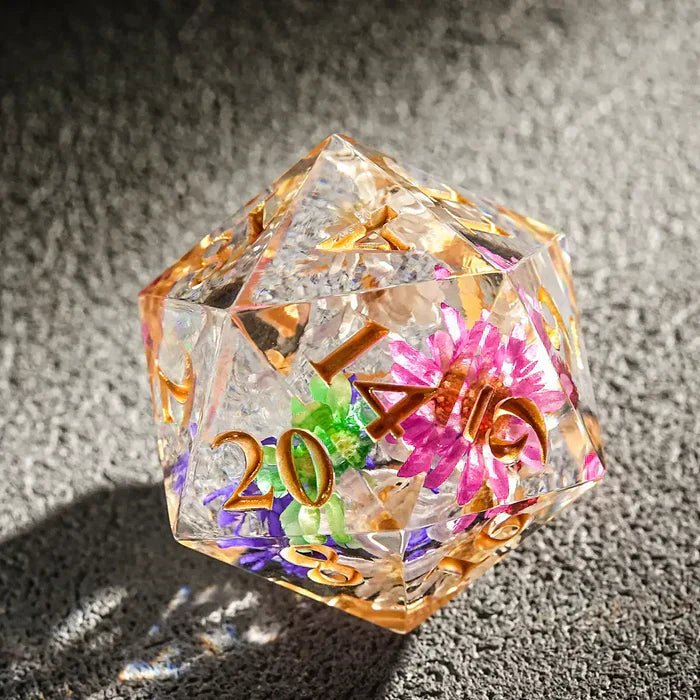In tabletop role-playing games (TRPGs), dice are like the gears of fate, driving the story and characters forward. You may be familiar with the common D6 dice, D20 dice, and D8 dice, but when a 10-sided dice rolls across the table and the number "0" appears in front of you, you may be stunned for a few seconds: Is this 0 or 10? Did I succeed, or did I fail completely?
Among the commonly used polyhedral dice sets, D10 (ten-sided dice) has become the most common and most easily misread dice by novices due to its high frequency of use and wide application scenarios. Especially in classic rule systems such as Dungeons & Dragons and Call of Cthulhu, D10 is a key tool for skill checks, damage calculations, and even life and death decisions.
1. What is a D10 dice?
D10, or 10-sided dice, is a polyhedral dice with ten faces. It looks like two pentagonal cones connected up and down, forming a "diamond-shaped" double-cone structure. Each face is marked with a number, and a random reading of 1-10 can be obtained.
There are two common numbering methods:
- 0 to 9: The most common form, where "0" actually represents 10
- 1 to 10: Some system dice use it, which is more intuitive to read, but it is rare.
2. Why does a D10 have a 0?
In fact, in a D10 dice, "0" does not mean "zero", but represents 10.
This is because the D10 dice needs to provide ten different results: 1 to 10. Marking it as 0 is actually a simplification of the dice manufacturing method.
In other words, in a single D10 die, the number marked with "0" is read as 10; the rest of the numbers are read as usual (1 is 1, 5 is 5, and so on)
| Dice display | Reading |
|---|---|
| 1 | 1 |
| 2 | 2 |
| 3 | 3 |
| 4 | 4 |
| 5 | 5 |
| 6 | 6 |
| 7 | 7 |
| 8 | 8 |
| 9 | 9 |
| 0 | 10 |
So if you roll a D10 die with "0" written on it, don't panic, it's actually "10", the maximum value in the D10 die.
3. What is a d10 dice used for?
Don't underestimate this ten-sided die, it has a lot of uses in tabletop role-playing games.
D10 dice can be used for:
-
Weapon damage: Longswords and heavy crossbows in DND need to roll 1d10 to calculate damage value;
-
Skill or attribute check: In COC, you need to roll D10 to complete "Sanity check" and skill check;
-
Health value roll: The health value dice of some professions are D10 dice. For example, fighters and paladins can roll 1D10 every time they level up to determine the additional health points obtained at that level.
-
Percentage check (D100): In COC, two D10s are used together to determine "whether hidden clues are found" and "whether adventures are triggered";
-
Generate random events: DM sometimes uses D10 to determine encounters, random events or treasures.
-
Even outside the game as a decision-making tool or teaching aid.
Compared to D6 or D20, the value range of D10 is just right. It can provide enough randomness without being too out of place, and is one of the most commonly used polyhedral dice in many TRPG systems!
4. Why use two D10s?
In many TRPG systems, such as Call of Cthulhu and World Darkness series, the judgment often adopts the percentage system - that is, a random number of 1-100 is thrown out. At this time, two D10 dice are used to combine into a D%, one for "tens" and the other for "units", which together represent numbers from 1 to 100.
- One dice is marked with "00", "10", "20"... "90", which is called the tens dice;
- The other dice is marked with 0-9, which is called the units dice.
- Combination method: Tens + Ones = Actual result
The following table shows common combinations and corresponding readings:
| Tens dice display | Ones dice display | Final reading |
|---|---|---|
| 00 | 1 | 1 |
| 20 | 7 | 27 |
| 50 | 0 | 50 |
| 00 | 0 | 100 |
Important note:
-
When the tens dice is "00", if the ones dice is "0" (representing 10), it is read as 100. Otherwise, "00" means that the tens digit is zero.
-
When the ones dice is "0", it means that the ones digit is 0, not "10"
👉 Question: Why not just buy a 100-sided dice?
✅ Answer: Although there are 100-sided dice on the market (often called "golf dice"), the actual use experience is still somewhat unsatisfactory. There are several main reasons:
-
Poor balance: D100 has 100 faces, which are very small and unevenly distributed, making it difficult to achieve truly fair randomness;
-
Rolling time is too long: It will roll on the table for a long time, often "turning non-stop", affecting the rhythm of the game;
-
Inconvenient reading: The dice have too many faces and the numbers are too small, making it difficult to quickly identify the results, especially in dim light;
-
Poor portability: The volume is usually larger than standard dice, making it inconvenient to store and carry;
🎲 In contrast, using two standard D10 dice (one for tens and one for ones) is both intuitive and efficient, and is the "D100 solution" currently used by most TRPG systems.
5. Example reading
To truly master the use of D10, the most direct way is to look at examples! Below, we will take you step by step through several actual throwing situations to learn how to correctly read the points of D10 and D100 (percentile) dice.
Example 1: You roll a regular D10 dice, and the reading is the number of points, which is very straightforward!
But if you roll a D10 dice and the number is 0, then congratulations, you are very lucky and the reading is 10.
Tens dice: 20, ones dice: 4, reading 24

Tens dice: 70, ones dice: 0, reading 70
Tens dice: 00, ones dice: 5, reading 5

Tens dice: 00, ones dice: 0, reading 100

6. Common misunderstandings about reading D10 dice
| Misunderstandings | Correct answers and explanations |
|---|---|
| ✖ Is the "0" on a D10 the number 0? | ✔ No, "0" represents the number 10, which is the maximum face value. |
| ✖ Is it 0 if two D10s are rolled "00" and "0"? | ✔ No, it is 100 (one hundred percent), not 0. |
| ✖ Does rolling a single D10 and getting "0" mean failure? | ✔ It does not mean failure, it represents the maximum value of 10, which is usually a good result. |
| ✖ Which dice of two D10s is the tens digit and which is the ones digit? | ✔ It needs to be agreed in advance or distinguished by different colors, but in commonly used DND dice sets, the tens digit dice are usually marked with 00-90, and the ones digit dice are usually marked with 0-9. |
| ✖ When the ones digit dice is "0" and the tens digit dice is "10", is the final reading 20? | ✔ No, the correct reading should be 10. At this time, the "0" of the ones digit dice represents zero, not "10". |
7. Expand your dice collection
Now that you have mastered how to read D10 dice correctly, it's time to give your dice collection a new look. If you’re looking for a set of D10 dice that’s both practical and visually appealing, start your exploration with Bear Dice.
Bear Dice offers a variety of D10 dice in different styles. Whether you like retro, fantasy, or simple and modern, you can always find a set that fits your character’s personality.
✨ If you’re playing a game that uses percentage dice, but don’t want to pair two D10s every time to read D% - we also have a dedicated D100 dice for you. You can directly read the result of 1–100 with one roll, which is simple, intuitive, and cool.



